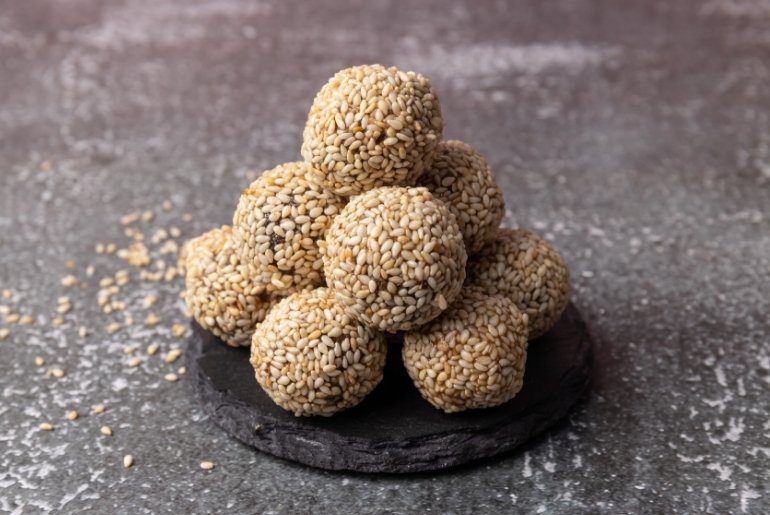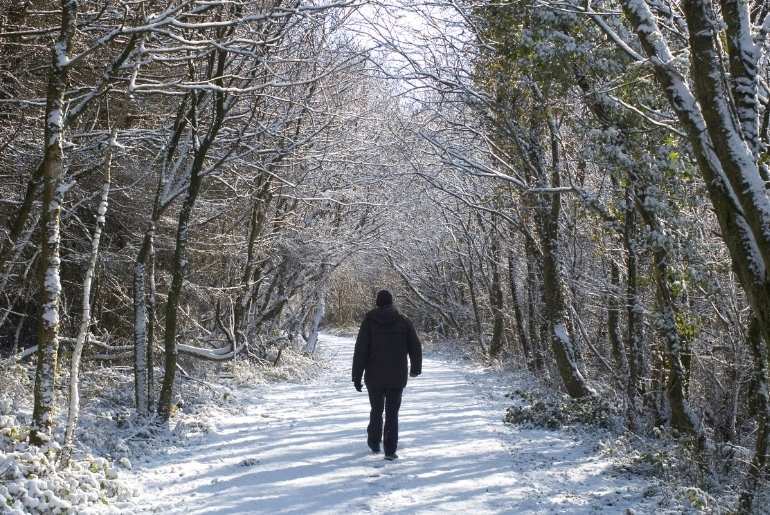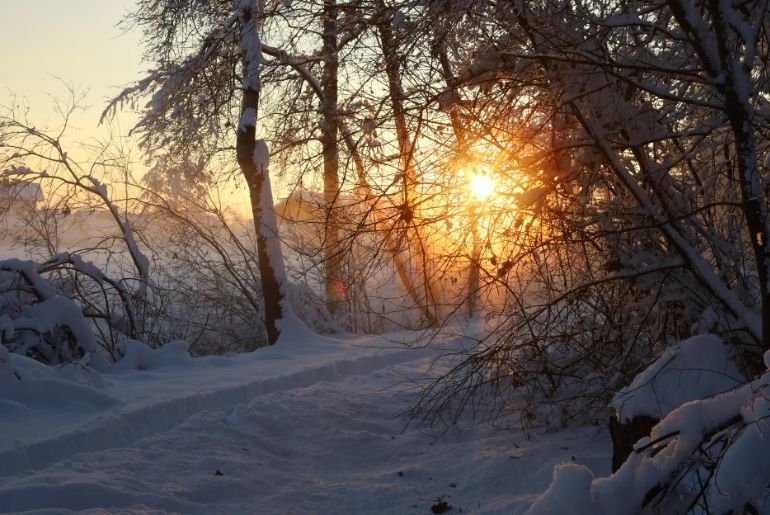There’s a hush that falls over the world when winter arrives. Trees hold their breath. Mornings stretch a little longer before the light creeps in. And somewhere between a cup of steaming chai and the soft whirr of a heater, we begin to move differently, more gently and more inwardly. That pause, that shift in rhythm, is what many now call the Winter Arc, a season not just of cold, but of recalibration. The Winter Arc isn’t a calendar event or a trend with hashtags. It’s a collective exhale that cultures have lived by for centuries, a slow return to the self when the outside world grows still.
The Idea Of The Winter Arc

At its heart, the Winter Arc is about retreat and renewal. Just as the earth pulls energy inward, trees shedding leaves, soil storing nutrients, and animals burrowing, the human body and mind crave a similar pause. From late November to early March, life tilts toward stillness. Our circadian rhythms respond to shorter days and longer nights, nudging us toward introspection rather than activity.
The Japanese call this quiet harmony “fuyugomori,” a kind of winter seclusion meant to restore balance. In India, Ayurveda names it “Hemant Ritu,” the time to strengthen immunity and slow down. The idea is universal: winter is less a stop and more a soft reboot.
How Winter Changes The Way We Eat

When the temperature drops, hunger deepens. It’s biological; our metabolism speeds up to keep us warm, and our instincts turn us toward comfort and density. The food of the Winter Arc isn’t about cosiness, it’s about rightfulness.
1. Meals That Hug Back
Soups, broths, and stews return to the table; they are thick, fragrant, and filled with root vegetables like carrots, turnips, and sweet potatoes. They’ve soaked up the sun all summer, and now they release it slowly into us. In Indian homes, dal bubbles gently on the stove, sometimes enriched with ghee or jaggery for a touch of sweetness. Across the world, kitchens rise with similar energy: ramen in Japan, borscht in Russia and lentil soup in the Mediterranean.
2. The Immunity Season
Winter is flu season, and nature provides its own defence system. Spices like turmeric, black pepper, and ginger warm the body from within. Herbal teas become medicine disguised as ritual. You can trace this pattern anywhere, from Koreans fermenting kimchi to Indians brewing kadha. The science is simple: good gut health equals good immunity.
3. The Fermented And The Forgotten
Fermentation is winter’s quiet alchemy. It keeps food alive long after harvest. In Punjab, earthen jars of kanji, a fermented drink made from black carrots and mustard seeds, sit in the sun for days, deepening in flavour. In Scandinavia, sauerkraut ferments in cellars. These foods aren’t just practical; they’re time capsules of ancestral wisdom.
4. Sweet Warmth, Not Guilt
Every culture has its winter treat. In India, gond ke laddu and til ke ladoo are whispered prescriptions for warmth, made with sesame, jaggery, and edible gum. They look like desserts but function like armour against the cold. The idea is not decadence but protection.
How Life Slows Down, And Why That’s Necessary

Something happens when daylight shortens: our minds start craving pause. The Winter Arc invites us to honour that slowness.
The Body’s Whisper: Melatonin levels rise sooner, making us sleepy early. Instead of fighting it with caffeine or screens, winter living encourages acceptance. So, sleep longer and wake slower. Let the morning light in. This isn’t laziness, it’s biology asking for balance.
The Movement of Ease: Gyms lose their appeal, but yoga mats and living-room stretches find new meaning. Ayurveda prescribes warming postures, Surya Namaskar (Sun Salutation) being the most famous, to ignite inner heat. Even a ten-minute walk in sunlight can lift serotonin levels.
The Ritual of Warmth: The skin dries, lips crack, and joints stiffen in this season. Old remedies resurface, with mustard oil massages, almond scrubs, and bowls of sesame-rich foods. Across regions, winter skincare is really about preservation, a tactile way of reminding the body it’s still loved.
Digital Hibernation: There’s a quiet rebellion in choosing a screen-free evening instead of the blue glow of phones. The yellow of a lamp, the curl of a page, and the sound of water boiling should be prioritised, as winter isn’t just about slowing down, it’s about deepening the quality of what we do when we stop rushing.
Also Read: 5 Healthy Food Items To Keep You Warm & Boost Immunity This Winter Season
The Emotional Arc Of Winter

Winter stirs emotion differently. With fewer daylight hours, some people sink into the “winter blues” or mild depression. But the same stillness that feels heavy can also become a space for clarity. The Winter Arc, when lived intentionally, turns solitude into a sanctuary.
Think of it as emotional composting, old thoughts breaking down to make room for new ones. People journal more, cook more, stay indoors longer, and, often without realising it, begin to listen to themselves. It’s no coincidence that so many spiritual practices and New Year resolutions are born in the coldest months; the silence makes us honest.
Psychologists call this seasonal attunement: aligning your internal rhythm with nature’s. It’s the opposite of resistance. Instead of demanding energy when the world asks for rest, you let the quiet do its work.
Also Read: Kashmir Turns Into Winter Wonderland As Gulmarg Is Covered In Snow; Mughal Road Closed
Winter Arc: The Culture Behind
Humans have always ritualised winter. The Danish turned it into “Hygge,” a philosophy of cosiness, candlelight, and shared meals. The Japanese wrap themselves around kotatsu tables, low wooden frames heated from beneath, with families sitting close and slow. In India, winter is marked by Lohri, Makar Sankranti, and Magh Bihu, festivals of fire, sesame, and gratitude for harvest.
Even in modern apartments, the instinct remains: a blanket, a playlist and a bowl of something hot. The form changes, but the feeling doesn’t. Modern life glorifies motion; “keep going” has become a badge of honour. But nature has never run on that principle. The Winter Arc reminds us that growth demands stillness first. That productivity without pause burns out the soil it grows from.
People are returning to this rhythm. The Winter Arc gives structure to something deeply human: the need to retreat before renewal. It helps combat burnout, fortifies the immune system, strengthens mental focus, and deepens relationships through shared quiet. It’s not anti-ambition, it’s preparation. Every seed needs its winter before it blooms.
Also Read: From Saag to Panjiri: 10 Punjabi Comfort Food To Stay Warm In Winter
Winter, for all its grey skies and cold mornings, is an act of grace. The world isn’t dying, but it’s regenerating. So when the air feels heavy and the pace slows, that’s not stagnation; it’s the earth’s heartbeat syncing with ours. The Winter Arc isn’t about doing less, it’s about doing differently, eating like your grandmother advised, resting like your body remembers and listening like you finally have time. And when spring comes, as it always does, it won’t feel like a new beginning at all, just the natural continuation of something that was quietly healing all along.
Cover Image Courtesy: as3d/CanvaPro and aleksandrkichigin/CanvaPro
For more such snackable content, interesting discoveries and the latest updates on food, travel and experiences in your city, download the Curly Tales App. Download HERE. First Published: November 07, 2025 10:13 AM




